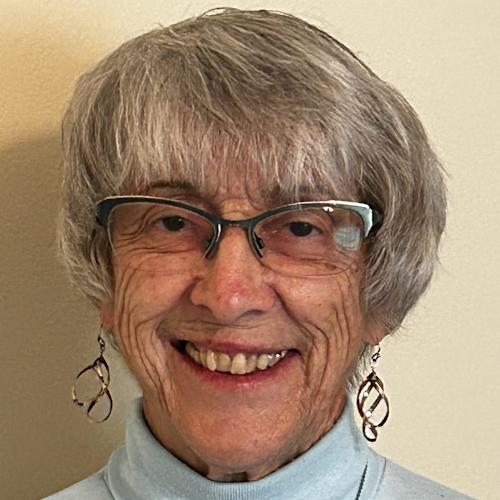Latest Data on Newly Approved CLL Drug Pirtobrutinib Presented at ASH 2023
Top CLL doctors share their thoughts on pirtobrutinib

Accelerated approval was granted to pirtobrutinib (JAYPIRCA, Eli Lilly and Company) by the U.S. Food and Drug Administration (FDA) for the treatment of adult patients with chronic lymphocytic leukemia (CLL) or small lymphocytic lymphoma (CLL/SLL) who have received at least two prior lines of therapy, including a BTK inhibitor and a BCL2 inhibitor.
To better understand what the approval means for CLL/SLL patients, we spoke directly to Dr. Adam Kittai from The Ohio State University – The James and Dr. Joanna Rhodes Rutgers Cancer Institute of New Jersey at this year’s American Society for Hematology (ASH) Annual Meeting.
This interview has been edited for clarity and length. This is not medical advice. Please consult with your healthcare provider for treatment decisions.
- What makes pirtobrutinib distinct from other FDA-approved BTK inhibitors?
- Can you share your insights on the safety and effectiveness of pirtobrutinib?
- Can you provide an overview of the BRUIN trial?
- Can you elaborate on the implications of this data for informing patients about the expected duration of treatment?
- What can you tell us about pirtobrutinib’s side effects and clinical trials?
- Final thoughts
- CLL patient stories
What makes pirtobrutinib distinct from other FDA-approved BTK inhibitors?
Dr. Joanna Rhodes: Pirtobrutinib is different from our other FDA approved BTK inhibitors because it’s something called a non-covalent inhibitor. It is a different drug entirely than our prior BTK, our covalent BTK inhibitors – ibrutinib acalabrutinib, and zanubrutinib. I consider it in its own class of drug, as opposed to lumping it into all BTK inhibitors because they do have different pathways and I think will be used in different scenarios.
Right now, the current FDA approval for pirtobrutinib is for patients that have received a covalent BTK inhibitor – so have gotten ibrutinib, acalabrutinib, or zanubrutinib – as well as a BCL2 inhibitor. And in usually in the United States, that’s venetoclax. It’s the one that’s commercially available. One of the challenging clinical scenarios that we were in before pirtobrutinib was if patients need more than two lines of therapy, what were we giving them? And we didn’t have a lot of great options.
Can you share your insights on the safety and effectiveness of pirtobrutinib?
Dr. Joanna Rhodes: Having participated in the BRUIN trial, I can tell you from a patient perspective that it is very few side effects. I think that’s really wonderful, and it’ll be exciting to see how pirtobrutinib moves into the treatment landscape of CLL
Can you provide an overview of the BRUIN trial?
Dr. Adam Kittai: So here at ASH, we saw an updated BRUIN trial analysis by my mentor, Dr. Woyach, at the CLL oral session that gave us a longer time follow up for patients on pirtobrutinib. But it also helped us know how patients do, whether they got BCL2 inhibitor venetoclax or not. In the trial, it was only mandated that you get a BTK inhibitor. 100% of patients received a BTK inhibitor. However, about 50% of received venetoclax as well. Dr. Jennifer Woyach showed us in the trial that if patients had received a prior BTK inhibitor and a venetoclax when they got pirtobrutinib, the median PFS was around 15 months, whereas if they did not give venetoclax, the median PFS is around 23 months.
Can you elaborate on the implications of this data for informing patients about the expected duration of treatment?
Dr. Adam Kittai: The reason why I bring this up, and why I think it’s important, is it helps us inform patients about how long we expect them to stay on drug. It also might have implications into the future about sequencing in terms of whether or not we should go from a covalent BTK inhibitor to venetoclax to a non-covalent or covalent BTK, better to non-covalent BTK orbiter to the nucleus. I think time will tell until we really know the answer to that question, but at least knowing this data is really informative.
Another thing that was presented by Doctor Jennifer Brown at Dana-Farber was the resistance mechanisms to pirtobrutinib. We got a better idea of how resistance forms in pirtobrutinib and how pirtobrutinib helps with resistance to covalent BTK inhibitors.
Once again, she showed that T474I and L528W are the primary resistance mutations for pirtobrutinib, and knowing those resistance mutations helps us as well. Knowing, sequencing, knowing and informing in the future whether or not we can go from covalent to non-covalent, which we know we can, or non-covalent to covalent, which is still a question that I think remains to be solved.
What can you tell us about pirtobrutinib’s side effects and clinical trials?
Dr. Joanna Rhodes: I can tell you from a patient perspective that it has very few side effects. I think that that’s really wonderful, and it’ll be exciting to see how pirtobrutinib moves into the treatment landscape of CLL.
There’s a lot of upcoming clinical trials using pirtobrutinib that we don’t have data from yet. They’re currently enrolling, and some have completed enrollment. Those are comparing pirtobrutinib to other covalent BTK inhibitors for patients who haven’t been treated with a BTK inhibitor. And then I think what’s interesting is we’re going to see it used in combination therapy for time-limited durations of treatment. And I think it’s going to be a safe and effective drug in that scenario as well, but we don’t have data from those trials yet. So definitely more to come from pirtobrutinib. But again, really exciting that for patients that have progressed or have received a BCL2 inhibitor and a covalent BTK inhibitor, we have this as a potential treatment option, commercially available and readily available outside of clinical trial.
Final thoughts
Dr. Adam Kittai: So really exciting to see this data, really exciting to see the evolution of pirtobrutinib. And I think the most exciting thing is now we just have another drug that’s approved for the treatment of CLL, which is just fantastic for our patients.
CLL patient stories
Serena V., Chronic Lymphocytic Leukemia (CLL)
Symptoms: Night sweats, extreme fatigue, severe leg cramps, ovarian cramps, appearance of knots on body, hormonal acne
Treatment: Surgery (lymphadenectomy)
Margie H., Chronic Lymphocytic Leukemia
Symptoms: Large lymph node in her neck, fatigue as the disease progressed
Treatment: Targeted therapy
Nicole B., Chronic Lymphocytic Leukemia
Symptoms: Extreme fatigue, night sweats, lumps on neck, rash, shortness of breath
Treatments: BCL-2 inhibitor, monoclonal antibody
Symptoms of CLL
Learn about how some of the common CLL symptoms first present themselves from patients who have been diagnosed with CLL.



